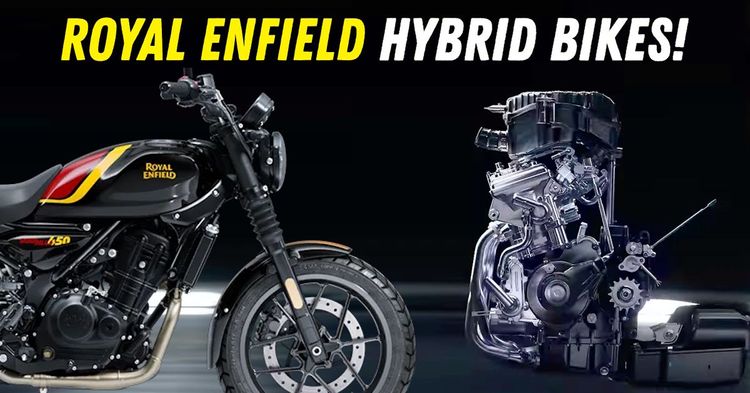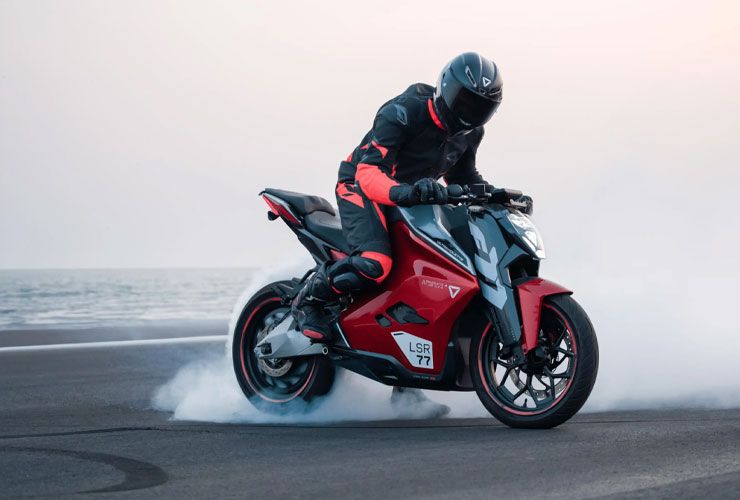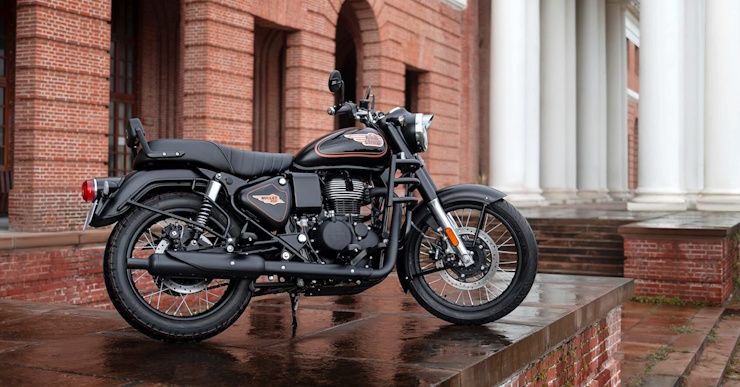Royal Enfield Will Build Hybrid Motorcycles


Royal Enfield is now steering toward hybrid motorcycle technology through a partnership with Chinese manufacturer CFMoto. This marks a pivotal shift in its approach to balancing performance with emissions compliance.

At the heart of this strategy is a 250cc hybrid-ready engine platform, codenamed 'V', that aims to meet tightening emission norms without compromising the brand’s distinctive riding experience. It also signals Royal Enfield’s entry into the budget premium segment, appealing to riders who want more performance without the weight or complexity of full electrification.
The foundation of this new approach is a technology-sharing deal with CFMoto. The Chinese firm will supply a compact, fuel-efficient 250cc engine architecture capable of supporting hybrid systems, while Royal Enfield retains control over key aspects like chassis geometry, suspension setup, and visual design. This gives the Chennai-based brand access to modern powertrain tech while preserving its unique identity.
The upcoming 250cc platform serves a dual purpose. It not only addresses current regulatory pressures under BS-VI Phase 2 norms but also lays the groundwork for future hybrid integration. Royal Enfield engineers are said to be exploring starter-generator systems that can support torque assist and regenerative braking. This modular thinking is similar to how carmakers are gradually adopting electrification without overhauling their entire lineups.

One of the biggest reasons Royal Enfield is leaning toward hybrids is the issue of weight. Fully electric motorcycles, such as the Ultraviolette F77, weigh more than 200kg, making them significantly heavier than their petrol counterparts. For bikes meant to be agile and engaging, that’s a big compromise.
Hybrids, on the other hand, offer efficiency improvements through compact batteries and lightweight motors. These systems provide better urban fuel economy and reduce emissions, while keeping the weight gain manageable. For bikes in the 250cc to 650cc range. which is Royal Enfield’s sweet spot, this approach helps retain the balance and rideability that enthusiasts value.
Yamaha’s FZ-S Fi Hybrid has already shown that mild hybrid systems can work in India’s price-sensitive market. The bike pairs a 149cc engine with a starter-generator unit that boosts torque during acceleration and provides automatic start-stop. It delivers up to 10 percent better fuel economy in city traffic. While not a full hybrid, this example proves that limited electrification can deliver real-world benefits.
Royal Enfield’s system is expected to go further, possibly offering short bursts of electric-only operation via a 48-volt mild-hybrid setup. This could prove useful in urban zones where emission regulations are expected to become stricter in the coming years.
The first Royal Enfield hybrid models are expected to debut around 2026–27 with prices ranging from ₹1.25 to ₹1.35 lakh. This positions them below the Hunter 350 and squarely in the path of commuters upgrading from 150cc bikes or first-time buyers seeking something more premium.
Production will be based at Royal Enfield’s Chennai plant, with localisation targets of 85 to 90 percent. Suppliers from India will provide hybrid-specific components, including battery packs, in alignment with the government’s push for self-reliant EV manufacturing.

Alongside its hybrid plans, Royal Enfield is also advancing its pure electric initiative under the 'Flying Flea' sub-brand. These electric models are expected to offer around 150km of range and will cater to urban riders looking for a zero-emission solution. Together, the two-pronged strategy reflects an understanding that different types of riders have different expectations - while some want city-ready EVs, others demand highway-capable machines with traditional feel.
Senior executives have recently visited Chinese technology firms to explore platforms that can share components across hybrid and electric models. This could help lower costs in areas like battery management systems and electronics.
India’s tightening fuel efficiency norms are another factor driving this hybrid move. Corporate Average Fuel Efficiency (CAFE) regulations demand fleet CO2 emissions drop from 91g/km in 2024 to 70g/km by 2030. Hybridisation provides an immediate way for Royal Enfield to earn carbon credits while full-electric models are still in the pipeline.
Analysts believe hybrid technology can extend the life of Royal Enfield’s popular single-cylinder engines. Rather than abandoning them, the company can modernise its offerings to remain compliant and relevant without alienating its core customer base.
One of the biggest challenges will be making hybrids that still feel like Royal Enfields. The brand is known for its mechanical simplicity and rider-focused experience. Adding too much technology risks alienating loyal fans. To address this, Royal Enfield’s design approach focuses on subtle integration. Battery packs may be housed within modified fuel tanks, while motors are expected to be compact and mounted near the transmission, keeping the silhouette intact.
Although hybrids don’t need public charging infrastructure, dealerships are reportedly preparing to upgrade service bays to handle diagnostic checks and maintenance for hybrid systems. These upgrades may also support future plug-in hybrids or electric models as the ecosystem matures.
Royal Enfield’s move into hybrids is a calculated response to India’s evolving mobility landscape. Full EVs may dominate headlines, but for heavier motorcycles and long-distance touring, hybrids offer a more practical middle path. It also gives the company a chance to stay ahead of competitors building hybrid models for India.
By opting for a collaborative development approach with CFMoto, Royal Enfield keeps costs under control and speeds up development timelines. The 2026 rollout will be a key moment - not just for the brand, but for the premium motorcycle segment as a whole. If successful, these hybrids could strike the perfect balance between emotion and evolution, tradition and technology.